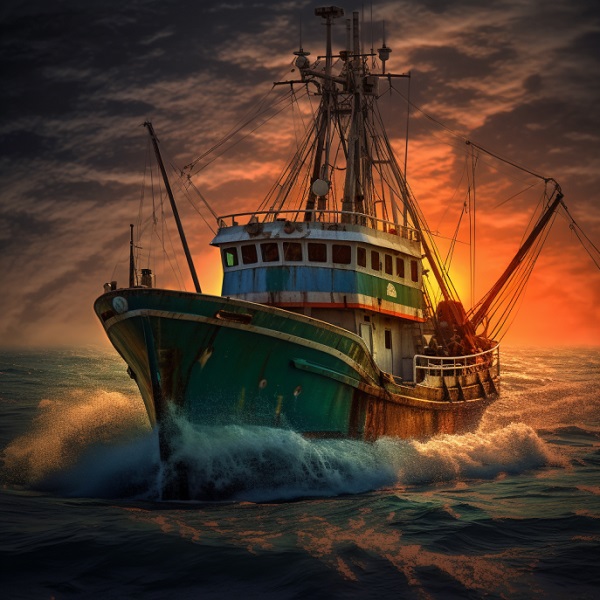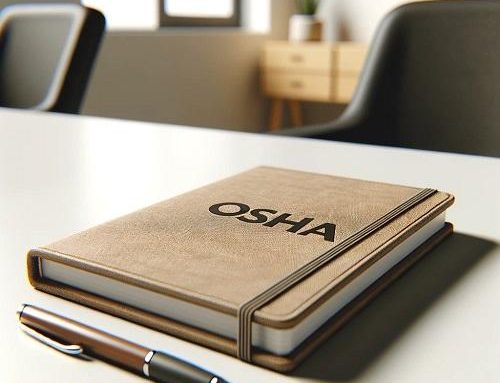Introduction
Alright folks, let’s roll up our sleeves and dive into the nitty-gritty of safety in the commercial fishing industry. Now, I’m not talking about the kind of safety that involves wearing a life jacket or avoiding a rogue wave. No, we’re going deeper than that. We’re venturing into the belly of the beast, the hidden dangers that lurk in the confined spaces of fishing vessels.
You see, our friends at OSHA and the U.S. Coast Guard have been keeping a keen eye on the fishing industry. They’re not just interested in the big picture stuff like the harvesting of fish or the general operation of a vessel. No, they’re concerned about the smaller, often overlooked activities that can lead our hardworking fishermen into dangerous territory. Activities like maintenance, cleaning, repair, alteration, and overhaul of vessels, whether at sea, dockside, or in a shipyard.
Now, I know what you’re thinking. “What’s so dangerous about cleaning a ship or doing a bit of repair work?” Well, let me tell you, these activities often involve work in confined spaces. And these confined spaces, my friends, can pose serious hazards to our workers.
The Hazards of Confined Spaces
We’re not just talking about the risk of fires, explosions, or falls, although those are certainly concerns. We’re talking about the atmospheric hazards that can turn a confined space into a death trap.
First off, we’ve got oxygen levels. Now, we all know that oxygen is a good thing. It’s what keeps us breathing, keeps us alive. But in a confined space, too little or too much oxygen can be deadly. Oxygen levels that dip below 19.5 percent can cause an initial loss of awareness, leading to suffocation and death. On the other hand, oxygen levels that rise above 22 percent can create a fire hazard, allowing a fire to burn at a faster than normal rate.
Next up, we’ve got toxic chemicals. I’m talking about nasty stuff like hydrogen sulfide and ammonia. These chemicals can pose significant risks to our workers, affecting their skin, eyes, and respiratory tract. And let me tell you, exposure to these toxic chemicals at high levels or for long periods of time can be lethal.
And last but certainly not least, we’ve got flammable atmospheres. You see, the presence of flammable or combustible gases or liquids in a confined space can result in an explosion when an ignition source, like a spark, is introduced.
To summarize the hazards of confined spaces, atmospheric hazards can turn a confined space into a death trap in the following ways:
- Low or High Oxygen Levels: Too little oxygen can knock you out faster than a heavyweight champ, leading to suffocation and death. Too much oxygen, on the other hand, can turn a small spark into a raging inferno.
- Toxic Chemicals: Hydrogen sulfide, ammonia, and other toxic chemicals can wreak havoc on your skin, eyes, and respiratory tract. Prolonged exposure or high levels can be a one-way ticket to the pearly gates.
- Flammable Atmospheres: Mix flammable gases or liquids with a spark, and you’ve got yourself an explosion waiting to happen.
Now that we’ve identified the hazards, let’s talk about how to navigate these treacherous waters.
Safe Confined Spaces Entry Practices
First and foremost, we need to ensure that a Shipyard Competent Person or Marine Chemist evaluates each confined space in accordance with OSHA requirements. These folks are trained to test potentially hazardous atmospheres, use instrumentation properly, maintain proper records, and know when a Certified Marine Chemist is required.
Before anyone steps foot in a confined space, it needs to be tested for oxygen content, flammability, and toxicity. And this isn’t a one-and-done deal. Continuous testing may be needed, depending on the space and the work being done.
And let’s not forget about ventilation. Properly working ventilation is crucial in a confined space. It’s the best way to remove toxic vapors and supply clean air.
Now, I want to take a moment to talk about what we bring into a confined space. Things like paints or chemicals can cause the atmosphere to become toxic. And portable internal combustion engines? Those are a big no-no. They could lead to carbon monoxide poisoning.
In the event of an emergency, it’s vital to have a plan in place to contact emergency services. And it’s not enough to just have a plan. Localrescue services need to be aware of your confined space activities so they’re prepared to respond.
And let’s not forget about the folks performing tank watch duties. These brave souls should never enter a space to attempt a rescue. Too many confined space fatalities involve workers trying to rescue a coworker.
Now, I know this is a lot to take in. But remember, safety isn’t just about following regulations. It’s about understanding the risks and taking the necessary precautions.
Let’s talk about some of these spaces. Ballast tanks or voids, lazarettes, chain lockers, sewage tanks, refrigeration spaces, fuel, lube or hydraulic oil tanks, slop tanks, holds or voids where organic matter, like fish or fish slime, may collect and decompose. Each of these spaces presents its own unique hazards.
To summarize this section, safe confined spaces entry practices:
- Evaluation: Get a Shipyard Competent Person or Marine Chemist to evaluate each confined space. These folks know their stuff and can help ensure you’re not walking into a death trap.
- Testing: Before you step foot in a confined space, test it for oxygen content, flammability, and toxicity. And remember, continuous testing may be needed.
- Ventilation: Make sure you’ve got proper ventilation. It’s your best bet for removing toxic vapors and supplying clean air.
- Awareness: Be mindful of what you’re bringing into a confined space. Certain paints or chemicals can turn a safe space toxic.
- Rescue Plan: Have a plan in place for emergencies. Make sure local rescue services are aware of your confined space activities and are ready to respond.
- Training: Ensure that personnel performing tank watch duties are trained never to enter a space to attempt a rescue. Too many confined space fatalities involve workers trying to rescue a coworker.
It’s a lot to consider, but it’s all part of the job.
Conclusion
Now, I want to take a moment to talk about some of the resources available to you. OSHA Directive, CPL 02-01-042, www.marinechemist.org, www.aiha.org, www.osha.gov/SLTC/etools/shipyard/index.html, and local safety suppliers or consultants. These resources can provide valuable information and guidance to help keep you safe.
Remember, this isn’t just about following rules and regulations. It’s about creating a safe and healthful workplace. It’s about providing employees with a workplace free from recognized hazards likely to cause death or serious physical harm.
So, whether you’re in the shipyard or out on the open sea, stay safe and keep fishing. Because at the end of the day, that’s what it’s all about.
And remember, if you need assistance, don’t hesitate to reach out. There are resources available to you. You’re not alone in this. We’re all in this together.
So, let’s roll up our sleeves, put on our safety gear, and get back to work. Because there’s nothing more rewarding than a hard day’s work done safely.
And remember, as always, safety first.
References:










